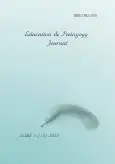Education & Pedagogy Journal
О журнале
Научный журнал “Education & Pedagogy Journal” ставит целью сделать взаимно-доступными результаты научных изысканий и практической деятельности в области педагогики образования для зарубежных и российских специалистов.
Журнал публикует:
- оригинальные статьи на английском языке, посвящённые наиболее актуальным проблемам теории, практики, философии и истории образования. Авторам статей на английском языке будет предоставлена возможность опубликовать переводы этих статей на русский язык в журналах ТГПУ.
Периодичность издания: 4 выпуска в год.
АРХИВ журнала содержит аннотации статей, ключевые слова, информацию об авторах английском языке, а также полнотекстовые версии статей.
Учредитель научного периодического издания - ФГБОУ ВО "Томский государственный педагогический университет".
Издание включено в подписной каталог «Пресса России» . Индекс 85700
Индексирование издания
- Издание включено в базу данных "ELIBRARY.RU"
- Издание включено в электронную базу научных работ "SCILIT (Швейцария)"
Информация о РИНЦ
Информация об опубликованных статьях регулярно передается в систему Российского индекса научного цитирования (РИНЦ):
Текущий выпуск
№ 3 (2025)
ПЕДАГОГИКА
ESG-образование в Российских университетах
Аннотация
 5 - 28
5 - 28


Анализ аспектов цифровой трансформации образовательной системы России
Аннотация
 29 - 43
29 - 43


Исследование развития китайского образования для пожилых людей с помощью искусственного интеллекта
Аннотация
 44 - 57
44 - 57


ПСИХОЛОГИЯ
Проявления эскапизма в молодежной среде
Аннотация
 58 - 68
58 - 68


Психолого-педагогический анализ доступности и проектировочных решений цифровой образовательной среды для обучающихся с нарушениями зрения
Аннотация
 69 - 88
69 - 88









